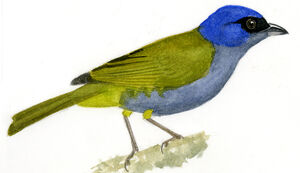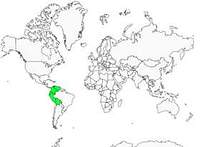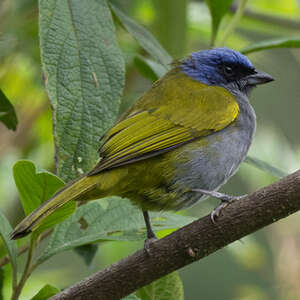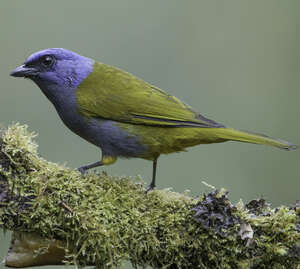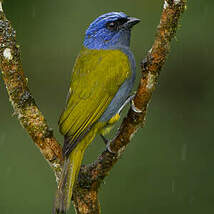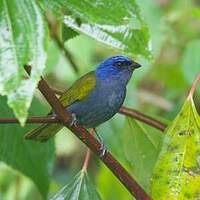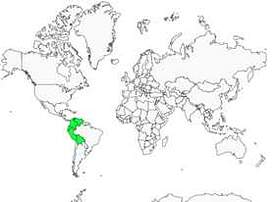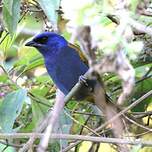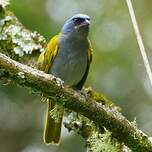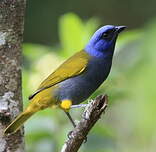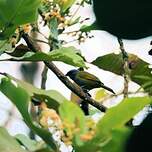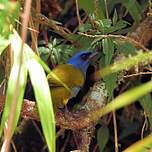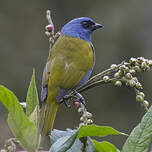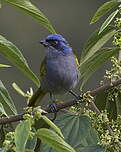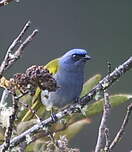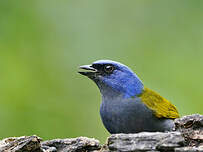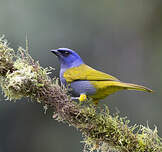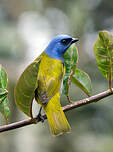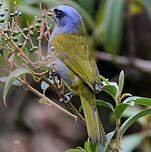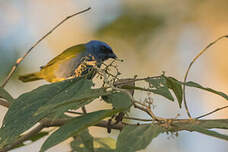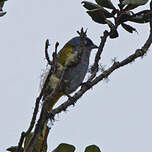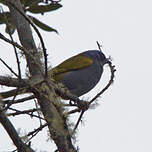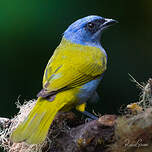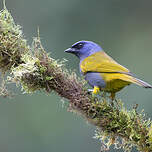Blue-capped Tanager
Sporathraupis cyanocephala - Tangara à tête bleue
Identification
Subspecific information 8 subspecies
- Sporathraupis cyanocephala cyanocephala (Ecuador, Peru and n Bolivia)
- Sporathraupis cyanocephala annectens (c and w Colombia)
- Sporathraupis cyanocephala auricrissa (ne Colombia and nw Venezuela)
- Sporathraupis cyanocephala margaritae (n Colombia)
- Sporathraupis cyanocephala hypophaea (nw to nc Venezuela)
- Sporathraupis cyanocephala olivicyanea (nc Venezuela)
- Sporathraupis cyanocephala subcinerea (nc to ne Venezuela)
- Sporathraupis cyanocephala buesingi (extreme ne Venezuela and Trinidad)
Foreign names
- Tangara à tête bleue,
- Tangara coroniazul,
- saíra-andina-de-cabeça-azul,
- Blaukopftangare,
- Blauwkaptangare,
- Tanagra capoblu,
- blåhuvad bergtangara,
- Blåhettetanagar,
- tangara modrohlavá,
- tangara modrokápá,
- Blåhættet Tangar,
- samettitangara,
- tàngara de caputxa blava,
- andagra modrogłowa,
- Синешапочный траупис,
- ズアオフウキンチョウ,
- 蓝枕裸鼻雀,
- blåhuvad bergtangara,
- 藍枕裸鼻雀,
Habitat
Threats - protection
IUCN conservation status
Extinct
Threatened
Least
concern
concern
Extinc
in the Wild
in the Wild
Near
threatened
threatened
Not
evaluated
evaluated
EX
EW
CR
EN
VU
NT
LC
NE
Other sources of interest
- Accipitriformes
- Aegotheliformes
- Anseriformes
- Apodiformes
- Apterygiformes
- Bucerotiformes
- Caprimulgiformes
- Cariamiformes
- Casuariiformes
- Charadriiformes
- Ciconiiformes
- Coliiformes
- Columbiformes
- Coraciiformes
- Cuculiformes
- Eurypygiformes
- Falconiformes
- Galliformes
- Gaviiformes
- Gruiformes
- Leptosomiformes
- Mesitornithiformes
- Musophagiformes
- Nyctibiiformes
- Opisthocomiformes
- Otidiformes
- Passeriformes
- Pelecaniformes
- Phaethontiformes
- Phoenicopteriformes
- Piciformes
- Podargiformes
- Podicipediformes
- Procellariiformes
- Psittaciformes
- Pterocliformes
- Rheiformes
- Sphenisciformes
- Steatornithiformes
- Strigiformes
- Struthioniformes
- Suliformes
- Tinamiformes
- Trogoniformes

